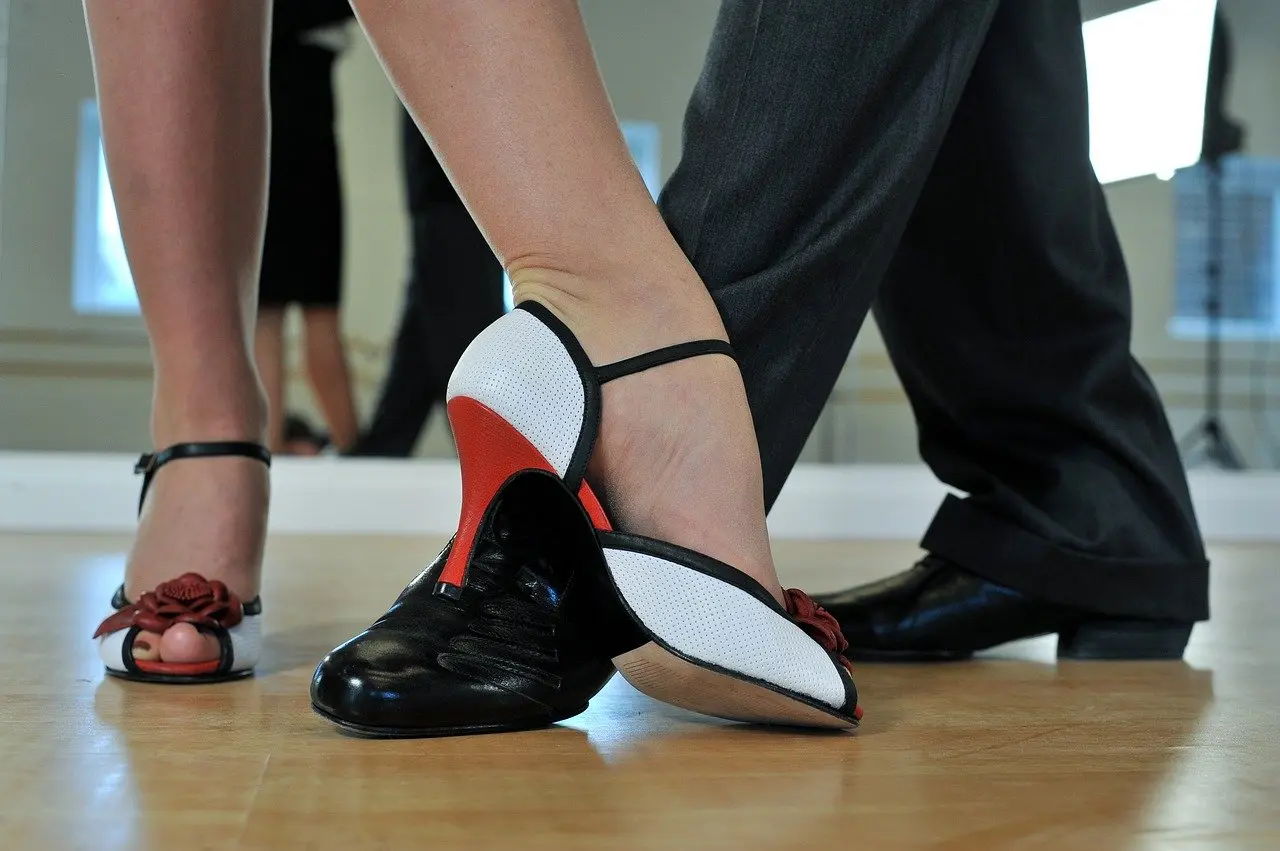Whether you’re gliding across the ballroom floor, swinging to jazz rhythms, or enjoying social dancing at your local studio, the right pair of T-strap heels can make all the difference in your performance and comfort. T-strap dance shoes combine elegance, security, and functionality, making them the preferred choice for dancers of all levels. This comprehensive guide will help you understand why T-strap heels are essential for dancing and how to choose the perfect pair for your dance style.
Why T-Strap Heels Are Perfect for Dancing
T-strap heels have become the gold standard in dance footwear for several compelling reasons. The distinctive T-shaped strap that runs from the toe to the ankle provides exceptional foot security, which is crucial when executing complex dance moves, spins, and quick direction changes.
Superior Foot Security
The primary advantage of T-strap heels for dancing is their secure fit. Unlike slip-on shoes or pumps, T-strap heels feature adjustable straps that keep your feet firmly in place during even the most dynamic movements. This security allows dancers to focus on their technique rather than worrying about their shoes slipping off.
Enhanced Stability
The ankle strap component of T-strap heels provides additional stability around the ankle joint, which is essential for maintaining balance during turns, dips, and lifts. This extra support helps prevent ankle injuries and allows for more confident movement across the dance floor.
Professional Appearance
T-strap heels offer a classic, elegant appearance that complements the formal nature of ballroom dancing while remaining stylish enough for social dance events. The timeless design ensures you’ll look polished and professional at any dance venue.
Versatility Across Dance Styles
One of the greatest advantages of T-strap heels is their versatility. A single pair can work effectively for multiple dance styles, from smooth ballroom dances to energetic swing routines, making them an excellent investment for dancers who enjoy various genres.
T-Strap Heels for Ballroom Dancing
Ballroom dancing demands precision, elegance, and seamless movement across the floor. T-strap heels designed for ballroom dancing typically feature specific characteristics that support these requirements.
Standard Ballroom Dances
For standard ballroom dances like waltz, tango, foxtrot, and quickstep, T-strap heels should have:
Heel Height: 2.5 to 3 inches for optimal posture and leg extension Heel Shape: Flared or slightly tapered for stability during long gliding movements Sole Material: Suede or leather for appropriate floor grip Strap Security: Adjustable T-strap with secure buckle closure
Latin Ballroom Dances
Latin dances such as rumba, cha-cha, samba, and jive require different specifications:
Heel Height: 2.5 to 3.5 inches for sharp, precise movements Heel Shape: Slimmer profile for quick weight changes Sole Flexibility: More flexible construction for intricate footwork Strap Design: Narrow, elegant straps that don’t interfere with leg lines
Competition Ballroom Dancing
Competitive ballroom dancers need T-strap heels that meet strict regulations while providing maximum performance:
Regulation Compliance: Must meet competition heel height and style requirements Premium Materials: High-quality leather or satin construction Custom Fitting: Professional fitting for optimal performance Durability: Reinforced construction for intensive training and competition use
T-Strap Heels for Swing Dancing
Swing dancing encompasses various energetic styles that require specialized footwear considerations. T-strap heels for swing dancing must withstand high-impact movements while providing the flexibility needed for creative expression.
Lindy Hop and East Coast Swing
These classic swing styles require T-strap heels with specific features:
Heel Height: 1.5 to 2.5 inches for optimal balance during aerial moves Shock Absorption: Cushioned insoles and arch support for jumping and landing Flexibility: Bendable soles for authentic swing movement Durability: Reinforced construction to handle intensive dancing
West Coast Swing
West Coast Swing’s slot-based movement pattern benefits from:
Heel Height: 2 to 3 inches for proper posture and slot navigation Smooth Soles: Controlled sliding ability for characteristic WCS movements Ankle Support: Secure T-strap design for stability during extensions Comfort Features: Padded straps and cushioned footbeds for long dance sessions
Balboa and Collegiate Shag
These close-embrace swing styles require:
Lower Heel Height: 1.5 to 2 inches for close-quarters maneuvering Flexible Construction: Soft materials that move with the foot Minimal Bulk: Streamlined design that doesn’t interfere with partner’s feet Secure Fit: Adjustable straps for confident close-embrace dancing
T-Strap Heels for Social Dancing
Social dancing environments present unique challenges and opportunities for T-strap heel selection. These casual yet elegant settings require shoes that balance style, comfort, and functionality.
Wedding and Special Event Dancing
For wedding receptions and special events, T-strap heels should offer:
Elegant Appearance: Classic styling that complements formal attire All-Day Comfort: Cushioned insoles and supportive construction Versatile Height: 2 to 3 inches for dancing and socializing Durable Construction: Quality materials that withstand extended wear
Dance Studio Social Events
Studio social dances benefit from:
Proper Sole Material: Suede or leather soles appropriate for dance floors Secure Fit: Adjustable straps for various dance styles throughout the evening Comfort Features: Padded footbeds and arch support for long sessions Style Versatility: Designs that work across multiple dance genres
Nightclub and Bar Dancing
Casual dance venues require:
Practical Heel Height: 2 to 2.5 inches for safety on various floor surfaces Durable Materials: Leather or synthetic materials that resist wear Secure Straps: Reliable closures that stay fastened during energetic dancing Comfort Priority: Well-cushioned construction for extended wear
Key Features to Look for in Dance T-Strap Heels
Heel Height and Shape
The heel is perhaps the most critical component of dance T-strap heels. Different dance styles require specific heel characteristics:
Ballroom Standard: 2.5-3 inches, flared or slightly tapered Ballroom Latin: 2.5-3.5 inches, slimmer profile Swing Dancing: 1.5-2.5 inches, wider base for stability Social Dancing: 2-3 inches, comfortable for extended wear
Sole Construction
Dance shoe soles must provide the right balance of grip and slide:
Suede Soles: Ideal for controlled sliding and turning Leather Soles: Durable option with moderate slip characteristics Split Soles: Enhanced flexibility for foot articulation Cushioned Soles: Added comfort for social dancing
Strap Design and Adjustability
The T-strap mechanism is crucial for proper fit and security:
Adjustable Ankle Strap: Ensures secure fit across different foot shapes Quality Buckles: Durable hardware that won’t fail during dancing Strap Width: Appropriate proportions for comfort and style Padding: Cushioned straps to prevent discomfort during long wear
Material Quality
Premium materials ensure durability and comfort:
Leather Upper: Breathable, durable, and molds to foot shape Satin Upper: Elegant appearance for formal ballroom dancing Synthetic Options: Affordable alternatives with good performance Lining Materials: Soft, moisture-wicking linings for comfort
Sizing and Fit Considerations
Proper fit is essential for dance T-strap heels to perform effectively and prevent injury. Dance shoes often fit differently than regular footwear, requiring special consideration.
Professional Fitting
Many dance shoe retailers offer professional fitting services that consider:
Foot Shape Analysis: Understanding your unique foot characteristics Dance Style Requirements: Matching shoe features to your primary dance styles Wear Pattern Assessment: Evaluating how your feet change during dancing Sizing Recommendations: Professional guidance on proper dance shoe sizing
Sizing Guidelines
Dance T-strap heels typically follow these sizing principles:
Snug Fit: Should feel secure without being uncomfortably tight Heel Placement: Heel should sit properly in the shoe cup Toe Room: Minimal sliding but adequate space for toe movement Width Consideration: Proper width prevents pinching and sliding
Break-In Process
New dance T-strap heels require proper break-in:
Gradual Wear: Start with short practice sessions Protective Measures: Use blister prevention products during break-in Stretching Options: Professional stretching for minor fit adjustments Patience: Allow adequate time for materials to conform to feet
Top Brands and Models
Professional Dance Shoe Brands
Several manufacturers specialize in high-quality dance T-strap heels:
Supadance: Known for exceptional craftsmanship and competition-grade shoes International Dance Shoes: Offers wide range of styles for all dance levels Diamant: German precision engineering for professional dancers Freed of London: Heritage brand with excellent reputation for quality
Popular T-Strap Models
Supadance 1063: Classic ballroom T-strap with 2.5-inch heel IDS Rumba: Elegant Latin-style T-strap with slim heel profile Diamant 020: Professional competition T-strap with premium materials Freed Studio: Versatile T-strap suitable for multiple dance styles
Budget-Friendly Options
Capezio: Affordable options without compromising basic quality Bloch: Good value dance shoes with reliable performance Very Fine: Budget-friendly shoes with decent construction Sansha: Entry-level options for beginning dancers
Care and Maintenance
Proper care extends the life of your dance T-strap heels and maintains their performance characteristics.
Daily Care
Post-Dance Cleaning: Remove dirt and moisture after each use Proper Storage: Use shoe trees and store in breathable bags Sole Maintenance: Brush suede soles to maintain proper texture Strap Inspection: Check buckles and straps for wear regularly
Deep Cleaning
Material-Specific Cleaning: Use appropriate cleaners for leather or satin Professional Cleaning: Consider professional services for expensive shoes Conditioning: Apply leather conditioner to maintain suppleness Sole Replacement: Replace worn soles to maintain performance
Seasonal Storage
Climate Control: Store in cool, dry environment Shape Maintenance: Use shoe trees to prevent deformation Rotation: Alternate between multiple pairs to extend lifespan Inspection: Check for damage during storage periods
Injury Prevention and Foot Health
Dancing in T-strap heels requires attention to foot health and injury prevention.
Common Dance Injuries
Ankle Sprains: Proper T-strap adjustment helps prevent ankle injuries Metatarsalgia: Cushioned insoles reduce forefoot pressure Achilles Tendonitis: Appropriate heel height prevents overextension Plantar Fasciitis: Arch support helps prevent foot pain
Prevention Strategies
Proper Warm-Up: Always warm up before dancing Strength Training: Build foot and ankle strength Flexibility Work: Maintain good range of motion Appropriate Footwear: Choose shoes suited to your dance style and level
Recovery and Treatment
Rest: Allow adequate recovery time between intense sessions Ice Therapy: Apply ice to reduce inflammation after dancing Professional Help: Seek medical attention for persistent pain Modification: Adjust dance intensity based on foot comfort
Choosing T-Strap Heels for Different Skill Levels
Beginner Dancers
Beginning dancers should prioritize comfort and stability:
Lower Heel Height: 1.5-2 inches for easier balance Wider Heel Base: More stable platform for learning Cushioned Construction: Extra padding for comfort during long lessons Affordable Options: Quality shoes without premium price tags
Intermediate Dancers
Intermediate dancers can handle more specialized features:
Standard Heel Heights: 2.5-3 inches for proper technique development Style-Specific Features: Shoes tailored to primary dance styles Better Materials: Upgraded construction for improved performance Multiple Pairs: Different shoes for different dance styles
Advanced Dancers
Advanced dancers require professional-grade features:
Competition Standards: Shoes meeting competition regulations Premium Materials: High-quality leather and construction Custom Fitting: Professional fitting for optimal performance Specialized Features: Style-specific characteristics for advanced techniques
Budget Considerations
T-strap dance heels are available across a wide price range, from budget-friendly options to premium professional models.
Entry-Level Options ($50-$100)
Basic Construction: Adequate for beginning dancers Standard Materials: Synthetic or basic leather construction Limited Features: Basic cushioning and support Suitable For: Casual dancing and initial lessons
Mid-Range Options ($100-$200)
Better Materials: Quality leather construction Enhanced Comfort: Improved cushioning and support Durability: Better construction for regular use Suitable For: Serious hobbyists and intermediate dancers
Premium Options ($200-$500+)
Professional Grade: Competition-quality construction Premium Materials: Finest leather and hardware Custom Features: Specialized characteristics for advanced dancing Suitable For: Professional dancers and serious competitors
Seasonal Considerations
Different seasons may require different approaches to T-strap heel selection and care.
Summer Dancing
Breathable Materials: Leather uppers for air circulation Moisture Management: Shoes that handle perspiration well Lighter Colors: Practical for outdoor or semi-outdoor venues Foot Hygiene: Extra attention to cleanliness in hot weather
Winter Dancing
Protective Materials: Shoes that resist moisture and salt Insulation: Appropriate for colder dance venues Traction: Consideration for outdoor walking surfaces Storage: Proper care for indoor/outdoor transitions
Year-Round Considerations
Versatile Styles: Shoes that work across seasons Multiple Pairs: Rotation prevents excessive wear Climate Storage: Appropriate storage for local conditions Maintenance Schedule: Regular care regardless of season
Conclusion
T-strap heels are an essential component of any serious dancer’s wardrobe, offering the perfect combination of security, style, and functionality across multiple dance genres. Whether you’re pursuing ballroom excellence, swing dance enthusiasm, or social dancing enjoyment, the right pair of T-strap heels will enhance your performance and protect your feet.
The key to selecting the perfect T-strap dance heels lies in understanding your specific needs: your primary dance styles, skill level, foot characteristics, and budget constraints. By considering these factors along with the detailed guidance provided in this comprehensive guide, you’ll be well-equipped to make an informed decision that will serve you well on the dance floor.
Remember that dance shoes are an investment in your dancing journey. Quality T-strap heels will not only improve your performance but also contribute to your long-term foot health and dancing enjoyment. Take the time to research, try on different options, and invest in the best pair you can afford – your feet and your dancing will thank you.
Whether you’re preparing for your first dance lesson or upgrading your professional competition gear, T-strap heels offer the reliability, elegance, and performance characteristics that serious dancers demand. With proper selection, care, and maintenance, a quality pair of T-strap dance heels will be your trusted partner through countless hours of dancing pleasure.















